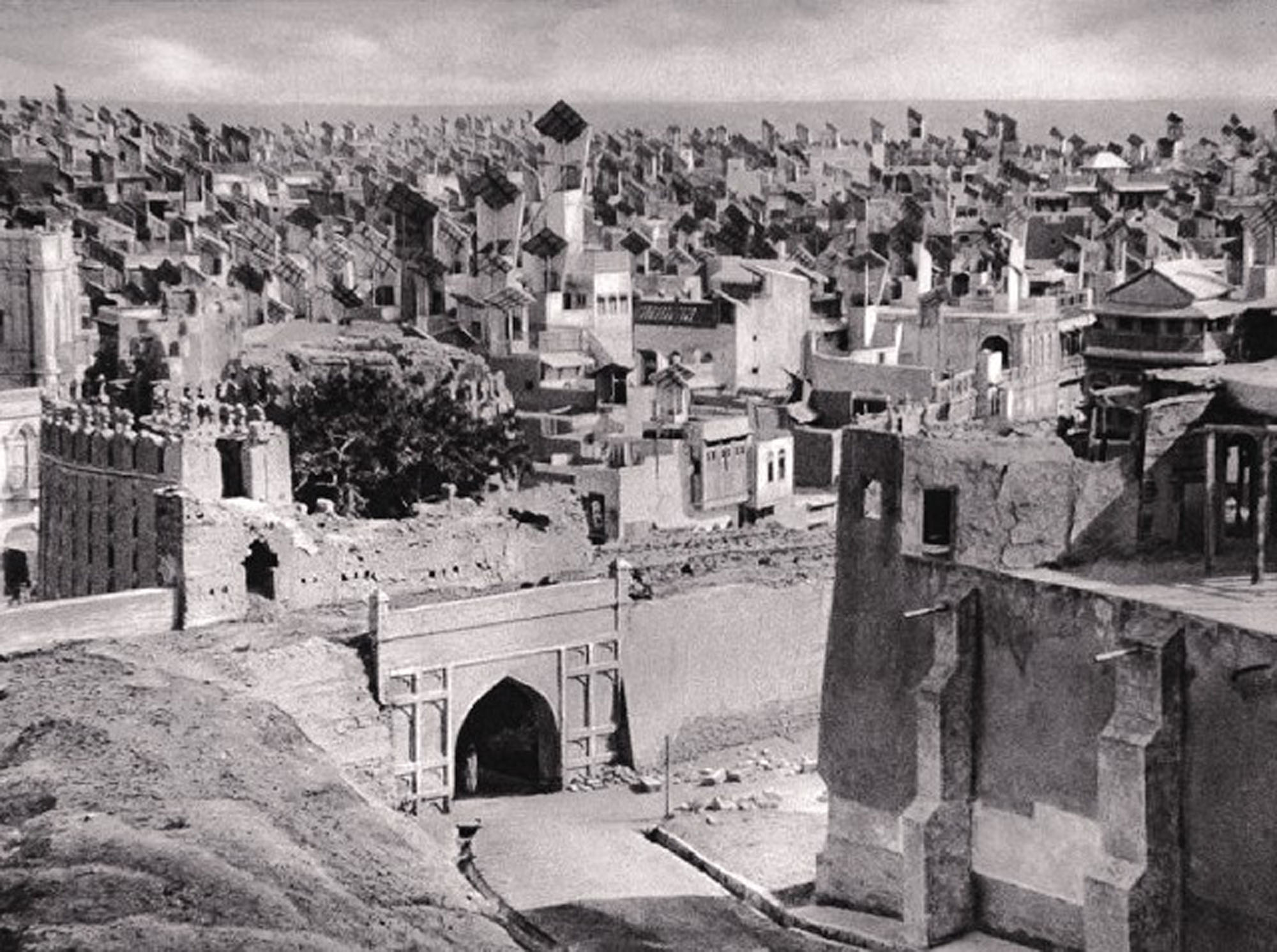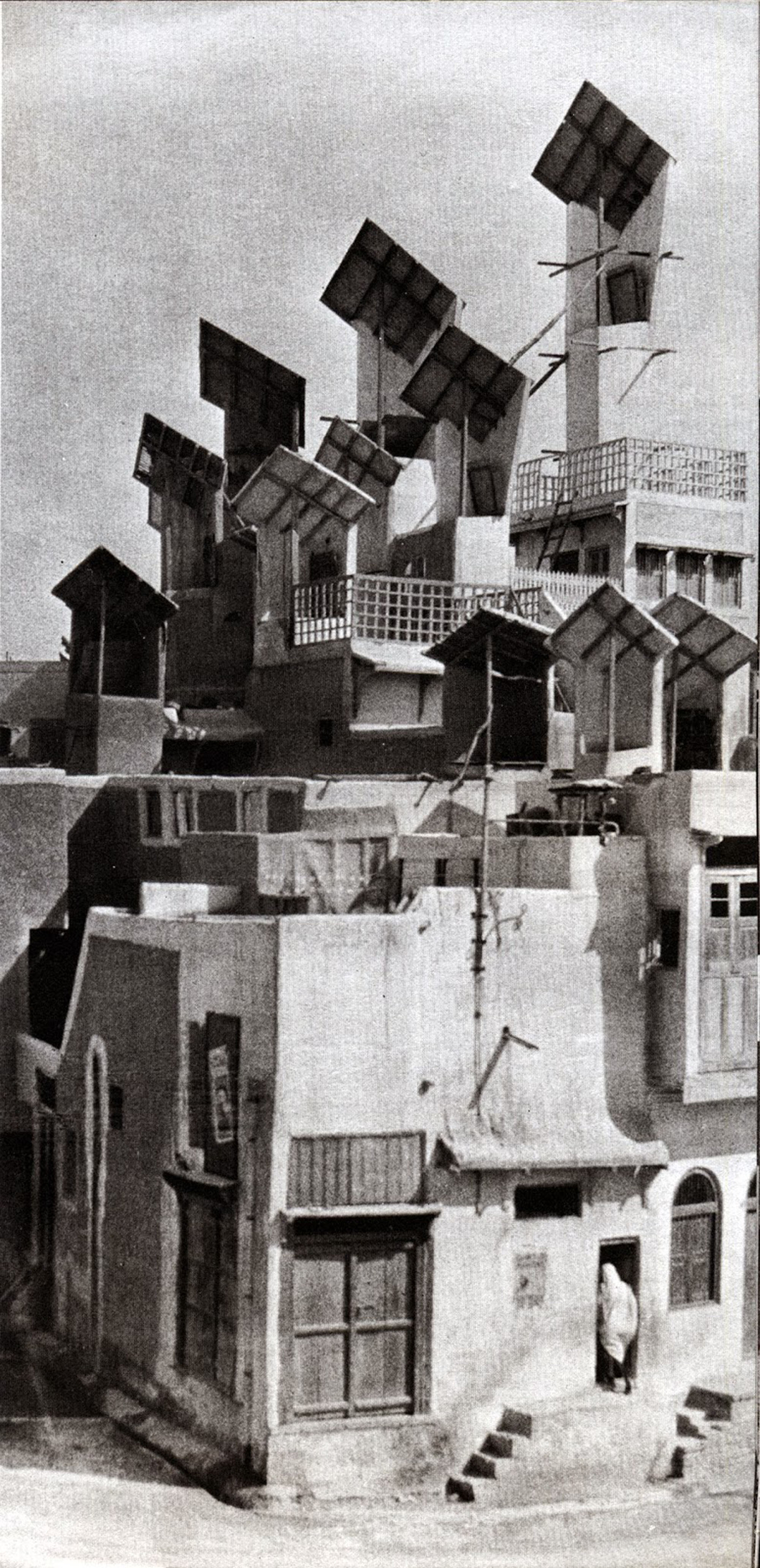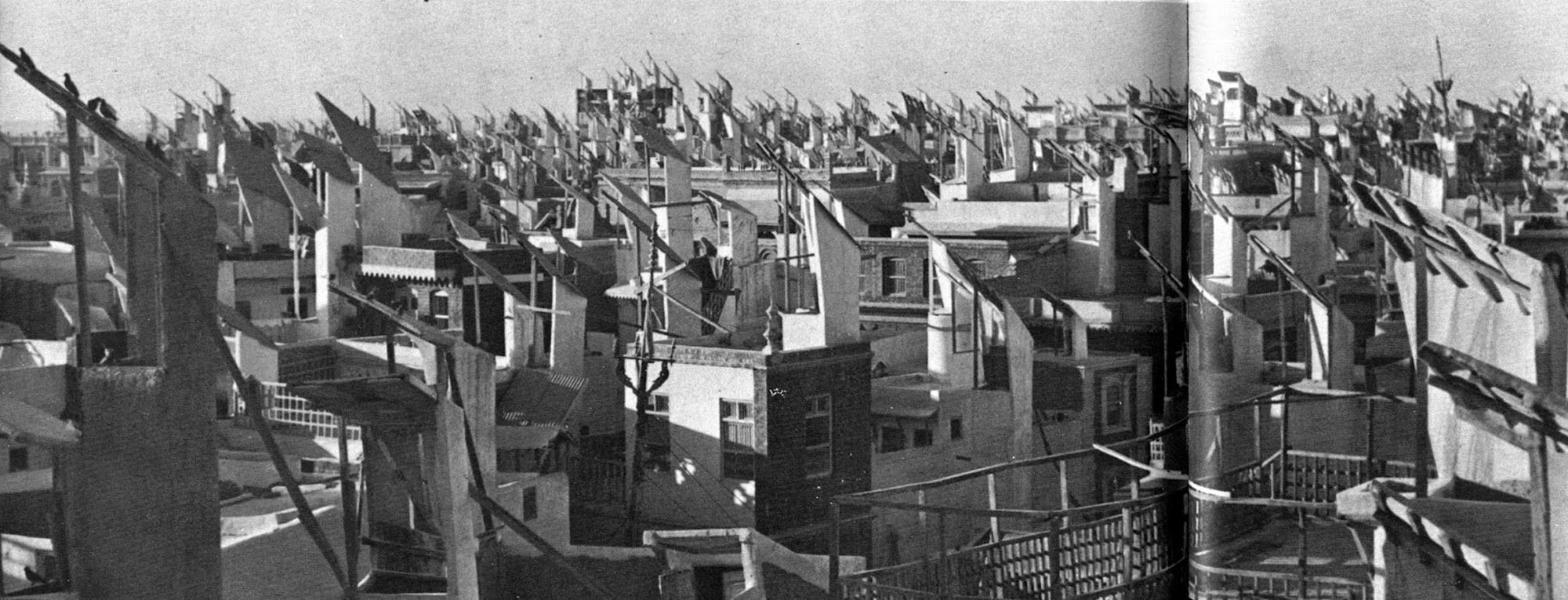The air-conditioners of Hyderabad Sin
These unusual roofscapes are a prominent feature of the lower Sind district in west Pakistan. From April to June, temperatures range above 120°F., lowered by an afternoon breeze to a pleasant 95°. To channel the wind into every building, “bad-gir,” windscoops, are installed on the roofs, one to each room. Since the wind always blows from the same direction, the position of the windscoops is permanently fixed. In multistoried houses they reach all the way down, doubling as intramural telephones. Although the origin of this contraption is unknown, it has been in use for at least five hundred years.
Architecture Without Architects by Bernard Rudofsky
In this book Bernard Rudofsky steps outside the narrowly defined discipline that has governed our sense of architectural history, and discusses the art of building as a universal phenomenon. By avoiding the geographical and social prejudices that have obscured what he views as a total picture of architecture, he offers us glimpses of worlds that were hitherto unknown and, indeed, unsuspected. A prehistoric theater district for a hundred thousand spectators on the American continent, and underground towns and villages (complete with schools, offices, and factories) inhabited by millions of people are among the unexpected phenomena he brings to light. In short, Architecture Without Architects, introduces the reader to communal architecture—architecture produced not by specialists but by the spontaneous and continuing activity of a whole people with a common heritage, acting within a community of experience.
The beauty of this “primitive” architecture has often been dismissed as accidental, but today we recognize in it an art form that has resulted from human intelligence applied to uniquely human modes of life. Indeed, Dr. Rudofsky sees the philosophy and practical knowledge of the untutored builders as untapped sources of inspiration for industrial man trapped in his chaotic cities. The wisdom to be derived from them, he feels, goes beyond economic and esthetic considerations, and touches the far tougher problem of how to live and let live, of how to keep peace with one’s neighbors in the parochial sense and in the universal one, as well.
Other projects by Bernard Rudofsky








